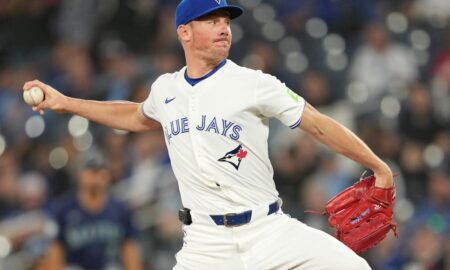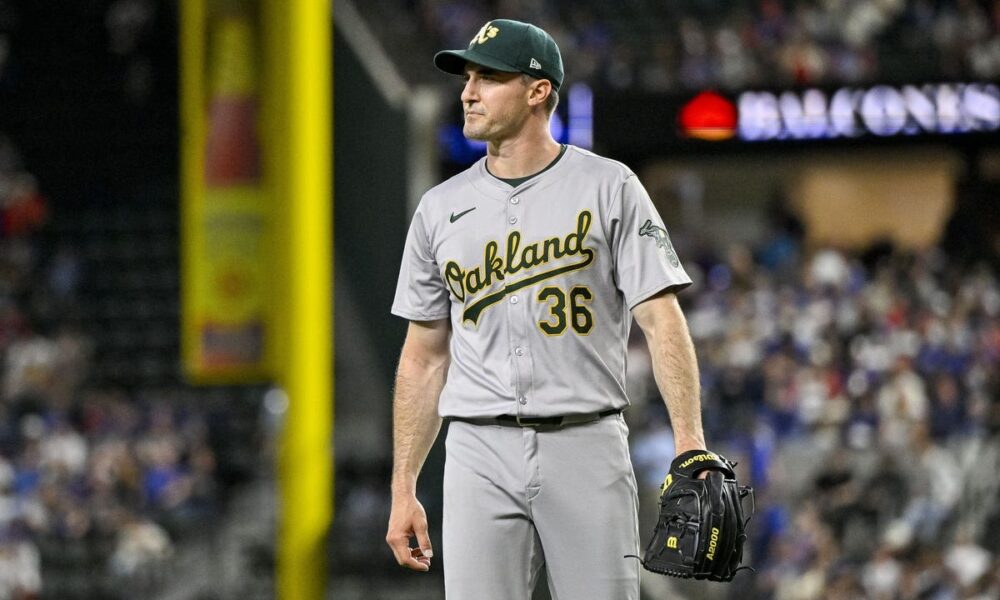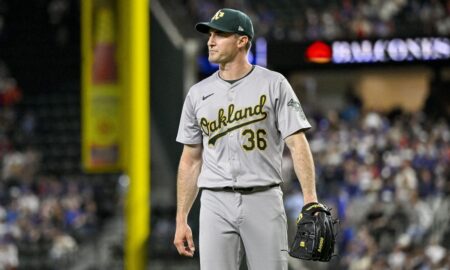Featured Articles
-

 22MLB Game Previews, Picks & Predictions
22MLB Game Previews, Picks & PredictionsNationals vs Dodgers Prediction, Pick, Preview & Betting Odds – MLB 4/15/24
-

 24NHL Game Previews, Picks & Predictions
24NHL Game Previews, Picks & PredictionsPredators vs Penguins Prediction, Pick, Preview & Betting Odds for 4/15/24
-

 50EPL Game Previews, Picks & Predictions
50EPL Game Previews, Picks & PredictionsEverton vs Chelsea Prediction, Pick, Preview & Betting Odds – Premier League 4/15/24
What’s Hot
-

 25MLB Game Previews, Picks & Predictions
25MLB Game Previews, Picks & PredictionsAngels vs Rays Prediction, Pick, Preview & Betting Odds – MLB 4/15/24
Check out our free Angels vs Rays pick and preview for this MLB matchup...
-
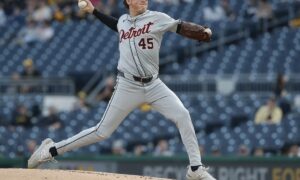
 30MLB Game Previews, Picks & Predictions
30MLB Game Previews, Picks & PredictionsRangers vs Tigers Prediction, Pick, Preview & Betting Odds – MLB 4/15/24
Check out our free Rangers vs Tigers pick and preview for this MLB matchup...
-

 24NHL Game Previews, Picks & Predictions
24NHL Game Previews, Picks & PredictionsBruins vs Capitals Prediction, Pick, Preview & Betting Odds for 4/15/24
Read on to get betting odds and prediction in our Bruins vs Capitals pick...
Latest Knup Sports Show
Latest Posts at KnupSports.com
-

 16NBA Articles, Opinions & Blogs
16NBA Articles, Opinions & Blogs11 Best NBA Players Born in Michigan of All Time
Join us as we look at the best NBA players born in Michigan over the history of the game.
-

 22MLB Game Previews, Picks & Predictions
22MLB Game Previews, Picks & PredictionsNationals vs Dodgers Prediction, Pick, Preview & Betting Odds – MLB 4/15/24
Check out our free Nationals vs Dodgers pick and preview for this MLB matchup at Dodger Stadium. See who we like to...
-

 35MLB Game Previews, Picks & Predictions
35MLB Game Previews, Picks & PredictionsReds vs Mariners Prediction, Pick, Preview & Betting Odds – MLB 4/15/24
Check out our free Reds vs Mariners pick and preview for this MLB matchup at T-Mobile Park. See who we like to...
-

 33MLB Game Previews, Picks & Predictions
33MLB Game Previews, Picks & PredictionsCardinals vs Athletics Prediction, Pick, Preview & Betting Odds – MLB 4/15/24
Check out our free Cardinals vs Athletics pick and preview for this MLB matchup at Oakland Coliseum. See who we like to...
-

 42MLB Game Previews, Picks & Predictions
42MLB Game Previews, Picks & PredictionsCubs vs Diamondbacks Prediction, Pick, Preview & Betting Odds – MLB 4/15/24
Check out our free Cubs vs Diamondbacks pick and preview for this MLB matchup at Chase Field. See who we like to...
-

 40MLB Game Previews, Picks & Predictions
40MLB Game Previews, Picks & PredictionsPadres vs Brewers Prediction, Pick, Preview & Betting Odds – MLB 4/15/24
Check out our free Padres vs Brewers pick and preview for this MLB matchup at American Family Field. See who we like...
-

 36MLB Game Previews, Picks & Predictions
36MLB Game Previews, Picks & PredictionsPirates vs Mets Prediction, Pick, Preview & Betting Odds – MLB 4/15/24
Check out our free Pirates vs Mets pick and preview for this MLB matchup at Citi Field. See who we like to...
-

 25MLB Game Previews, Picks & Predictions
25MLB Game Previews, Picks & PredictionsAngels vs Rays Prediction, Pick, Preview & Betting Odds – MLB 4/15/24
Check out our free Angels vs Rays pick and preview for this MLB matchup at Tropicana Field. See who we like to...
-

 30MLB Game Previews, Picks & Predictions
30MLB Game Previews, Picks & PredictionsRockies vs Phillies Prediction, Pick, Preview & Betting Odds – MLB 4/15/24
Check out our free Rockies vs Phillies pick and preview for this MLB matchup at Citizens Bank Park. See who we like...
-
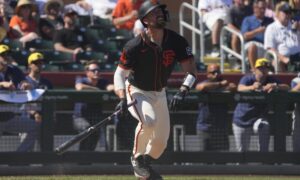
 32MLB Game Previews, Picks & Predictions
32MLB Game Previews, Picks & PredictionsGiants vs Marlins Prediction, Pick, Preview & Betting Odds – MLB 4/15/24
Check out our free Giants vs Marlins pick and preview for this MLB matchup at loanDepot Park. See who we like to...
-

 30MLB Game Previews, Picks & Predictions
30MLB Game Previews, Picks & PredictionsRangers vs Tigers Prediction, Pick, Preview & Betting Odds – MLB 4/15/24
Check out our free Rangers vs Tigers pick and preview for this MLB matchup at Comerica Park. See who we like to...
-
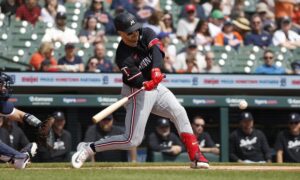
 34MLB Game Previews, Picks & Predictions
34MLB Game Previews, Picks & PredictionsTwins vs Orioles Prediction, Pick, Preview & Betting Odds – MLB 4/15/24
Check out our free Twins vs Orioles pick and preview for this MLB matchup at Oriole Park at Camden Yards. See who...
-

 37MLB Game Previews, Picks & Predictions
37MLB Game Previews, Picks & PredictionsGuardians vs Red Sox Prediction, Pick, Preview & Betting Odds – MLB 4/15/24
Check out our free Guardians vs Red Sox pick and preview for this MLB matchup at Fenway Park. See who we like...
-

 36NHL Game Previews, Picks & Predictions
36NHL Game Previews, Picks & PredictionsWild vs Kings Prediction, Pick, Preview & Betting Odds for 4/15/24
Check out our free Wild vs Kings prediction for this NHL matchup in Los Angeles. See who we like to win and...
-

 28NHL Game Previews, Picks & Predictions
28NHL Game Previews, Picks & PredictionsSharks vs Oilers Prediction, Pick, Preview & Betting Odds for 4/15/24
In this NHL regular season prediction between the Sharks and Oilers, see who like to win the game and cover the puck...
-

 25NHL Game Previews, Picks & Predictions
25NHL Game Previews, Picks & PredictionsSenators vs Rangers Prediction, Pick, Preview & Betting Odds for 4/15/24
Check out our Senators vs. Rangers pick and preview to get our insight on to who will win and cover the puck...
-

 24NHL Game Previews, Picks & Predictions
24NHL Game Previews, Picks & PredictionsBruins vs Capitals Prediction, Pick, Preview & Betting Odds for 4/15/24
Read on to get betting odds and prediction in our Bruins vs Capitals pick and preview and see who we think will...
-
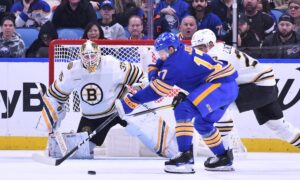
 30NHL Game Previews, Picks & Predictions
30NHL Game Previews, Picks & PredictionsSabres vs Lightning Prediction, Pick, Preview & Betting Odds for 4/15/24
Read our Sabres vs Lightning prediction for this NHL regular season game in Tampa. Check out who we like to win and...
-

 24NHL Game Previews, Picks & Predictions
24NHL Game Previews, Picks & PredictionsPredators vs Penguins Prediction, Pick, Preview & Betting Odds for 4/15/24
Read on to get betting odds and prediction in our Predators vs Penguins pick and preview and see who we think will...
-

 30NHL Game Previews, Picks & Predictions
30NHL Game Previews, Picks & PredictionsIslanders vs Devils Prediction, Pick, Preview & Betting Odds for 4/15/24
Keep reading to see our Islanders vs Devils NHL prediction. In this article we will outline who will come away with the...


